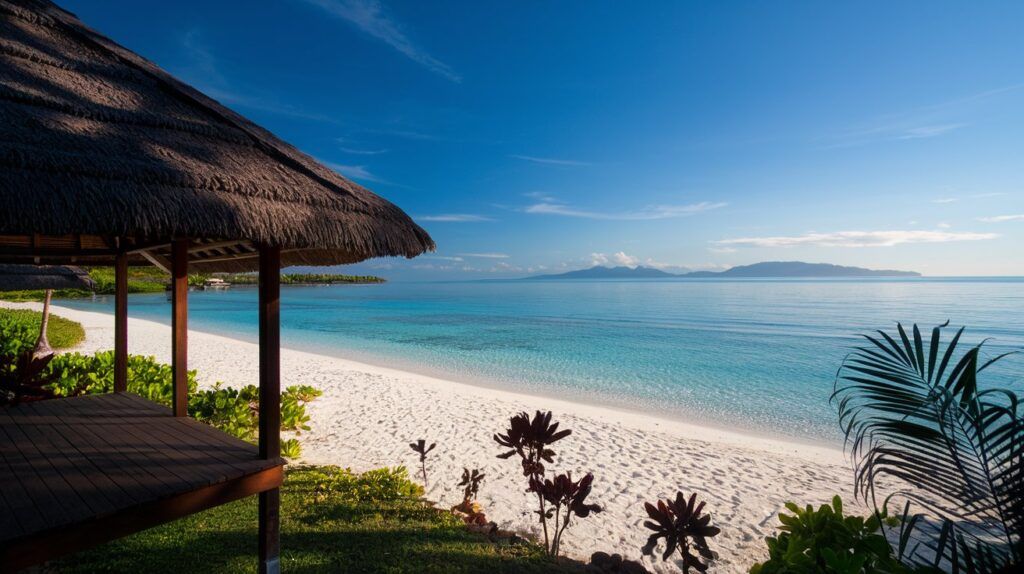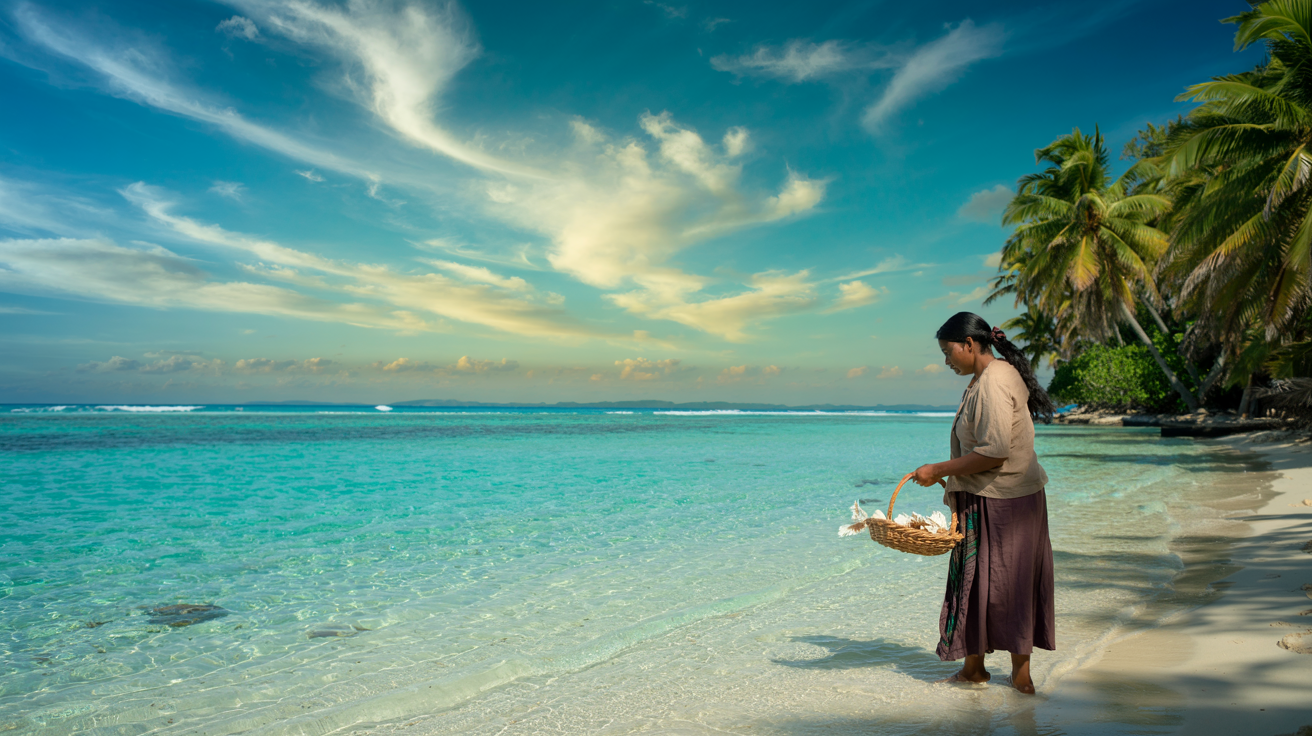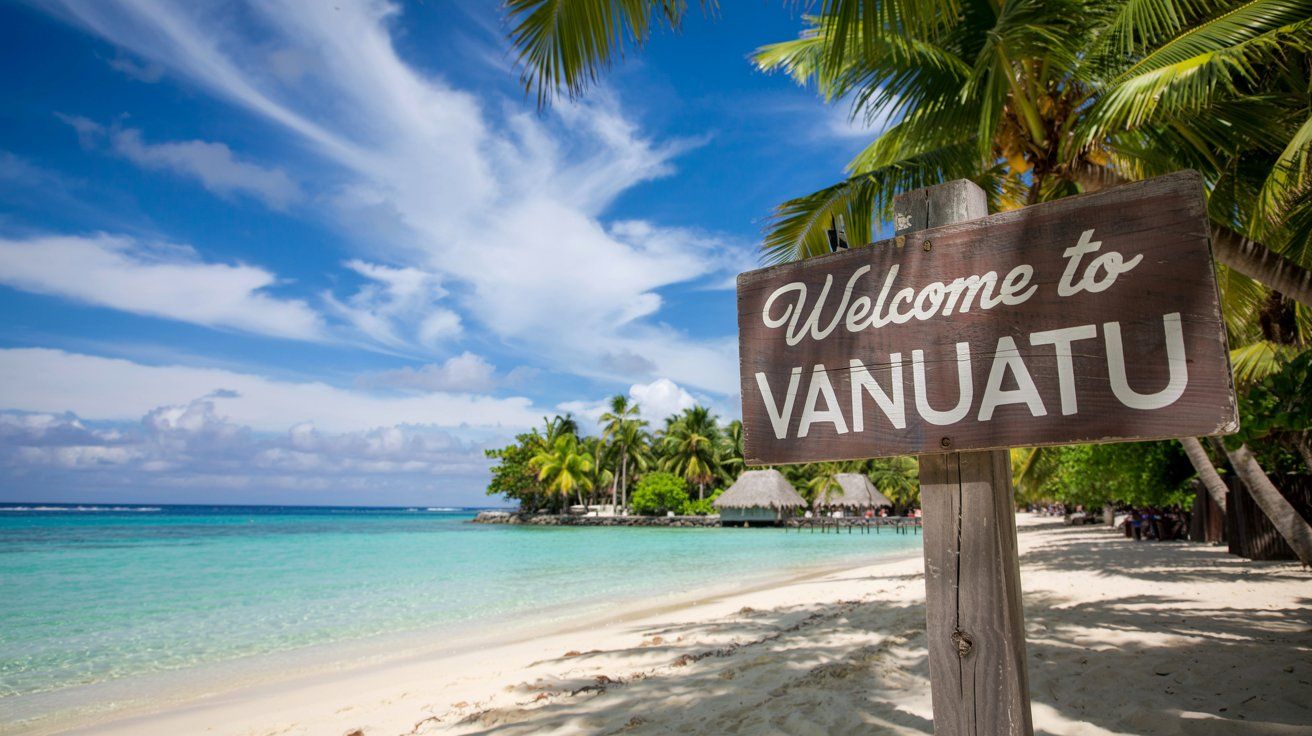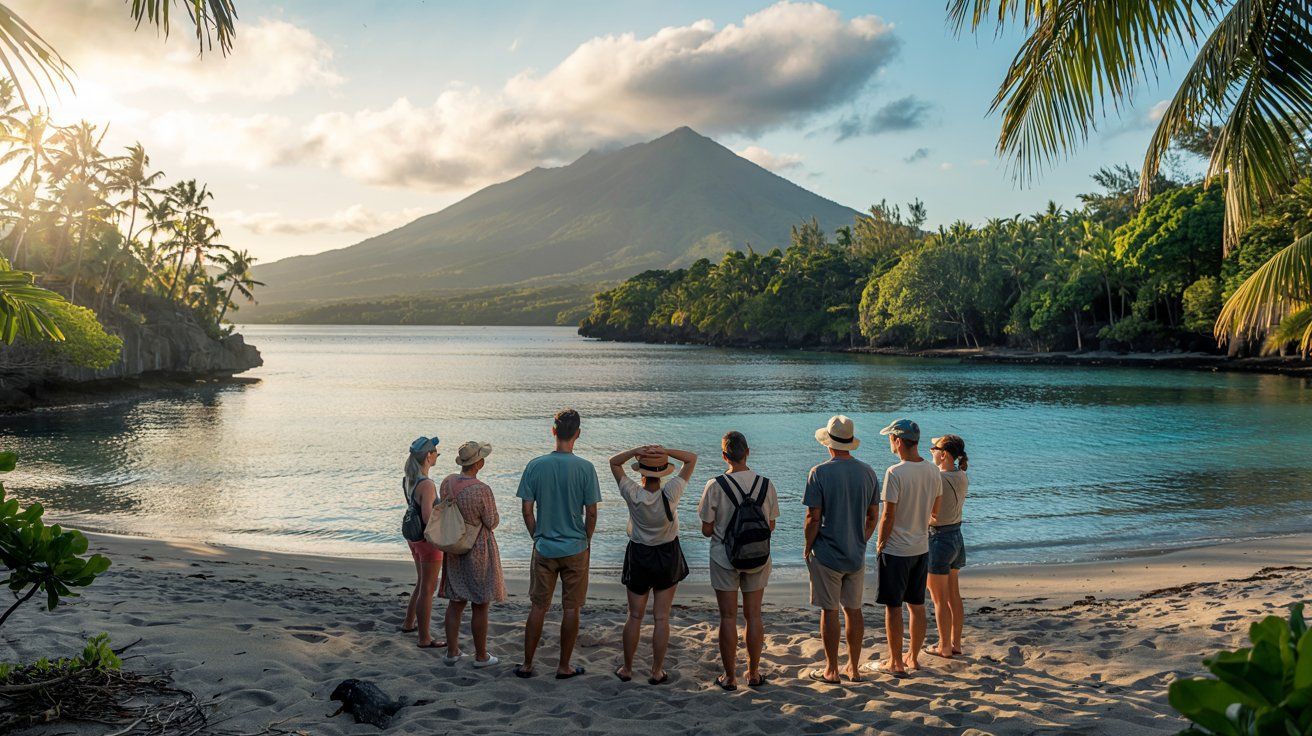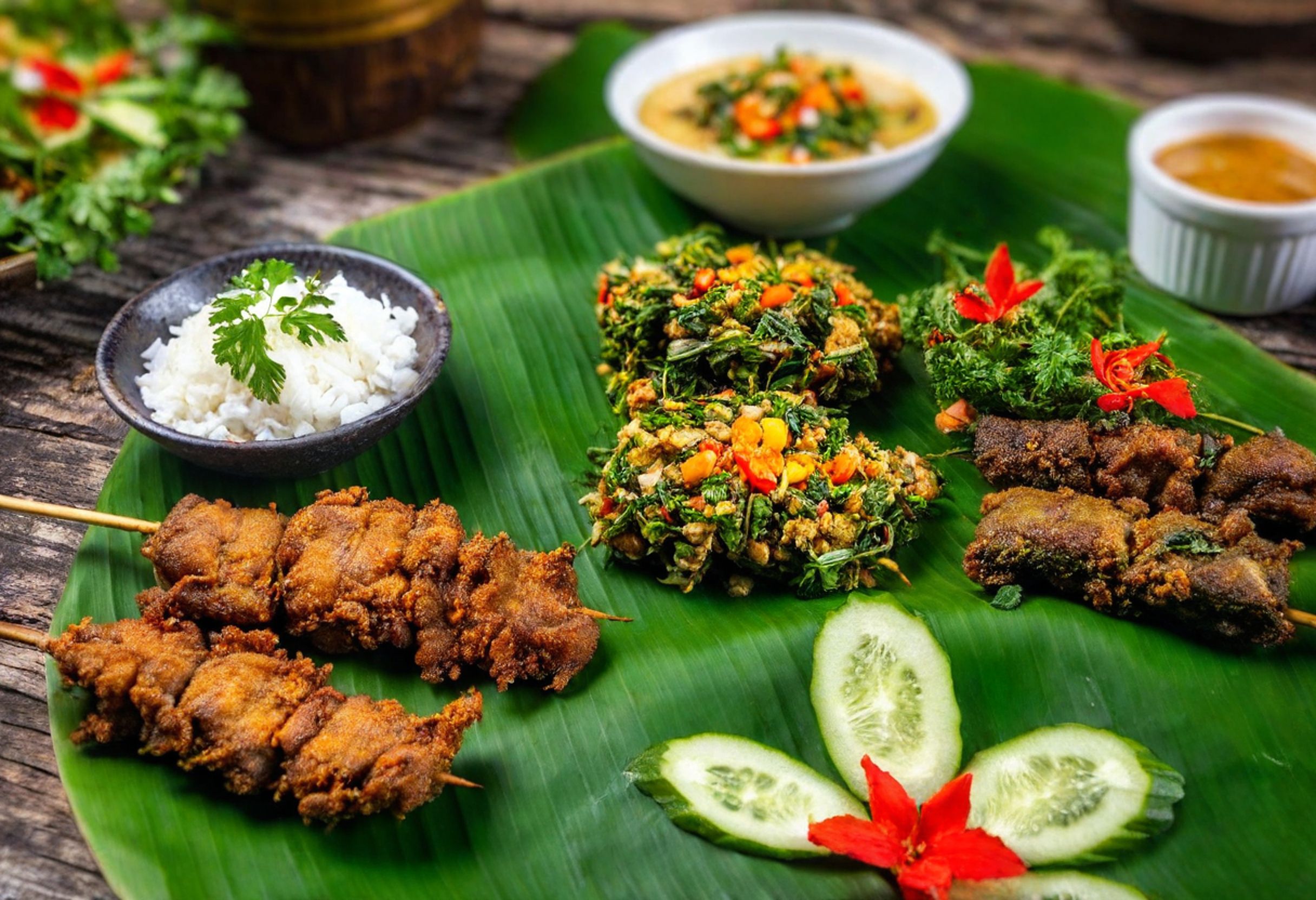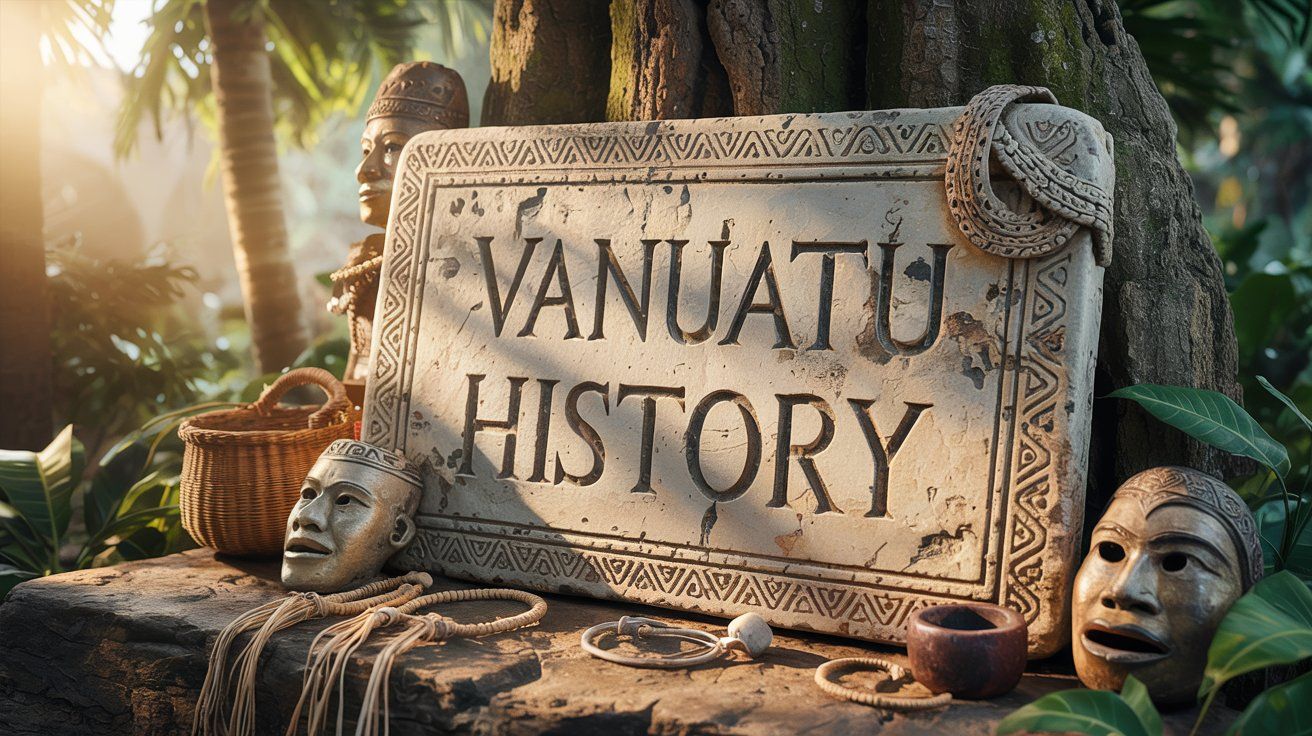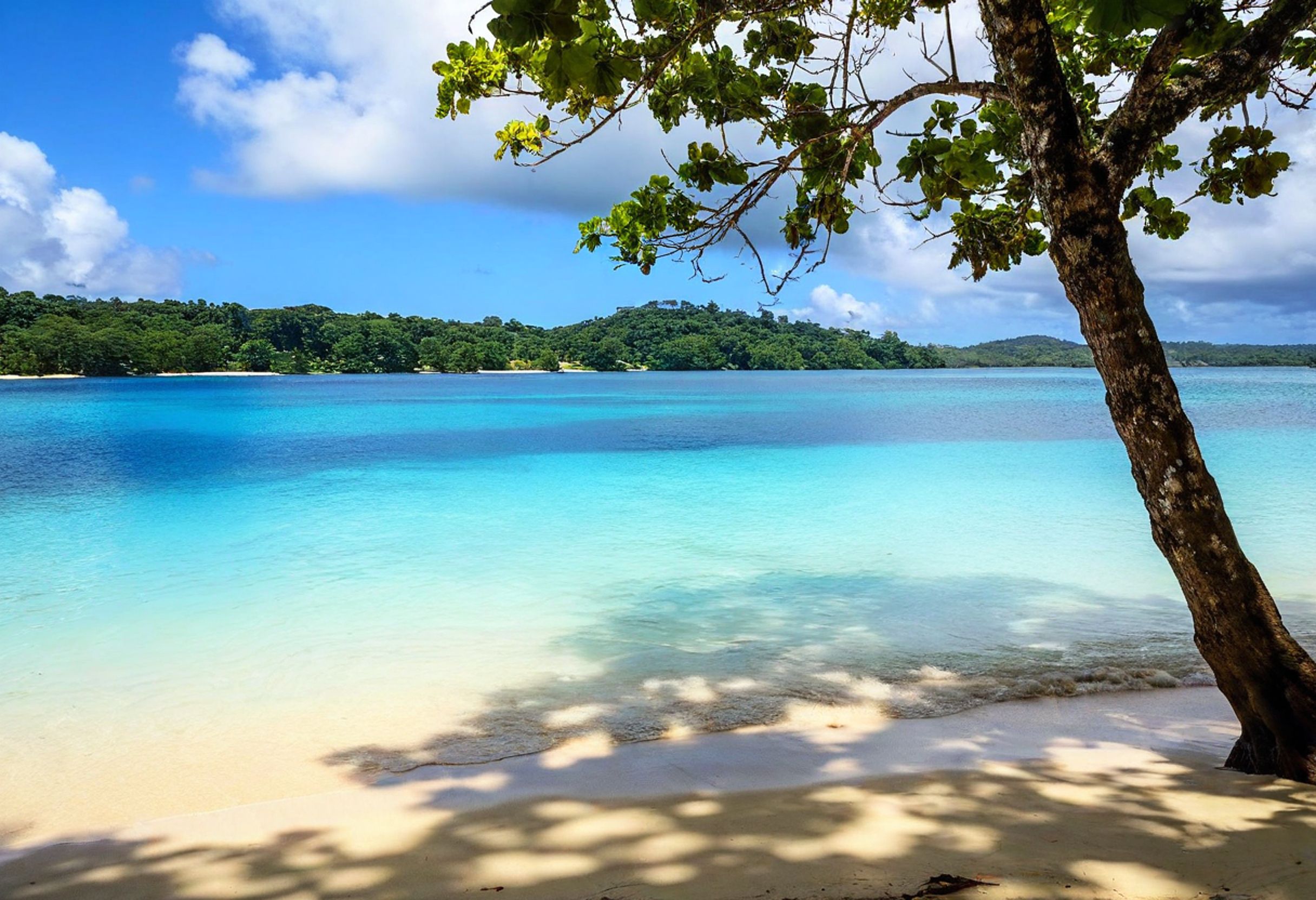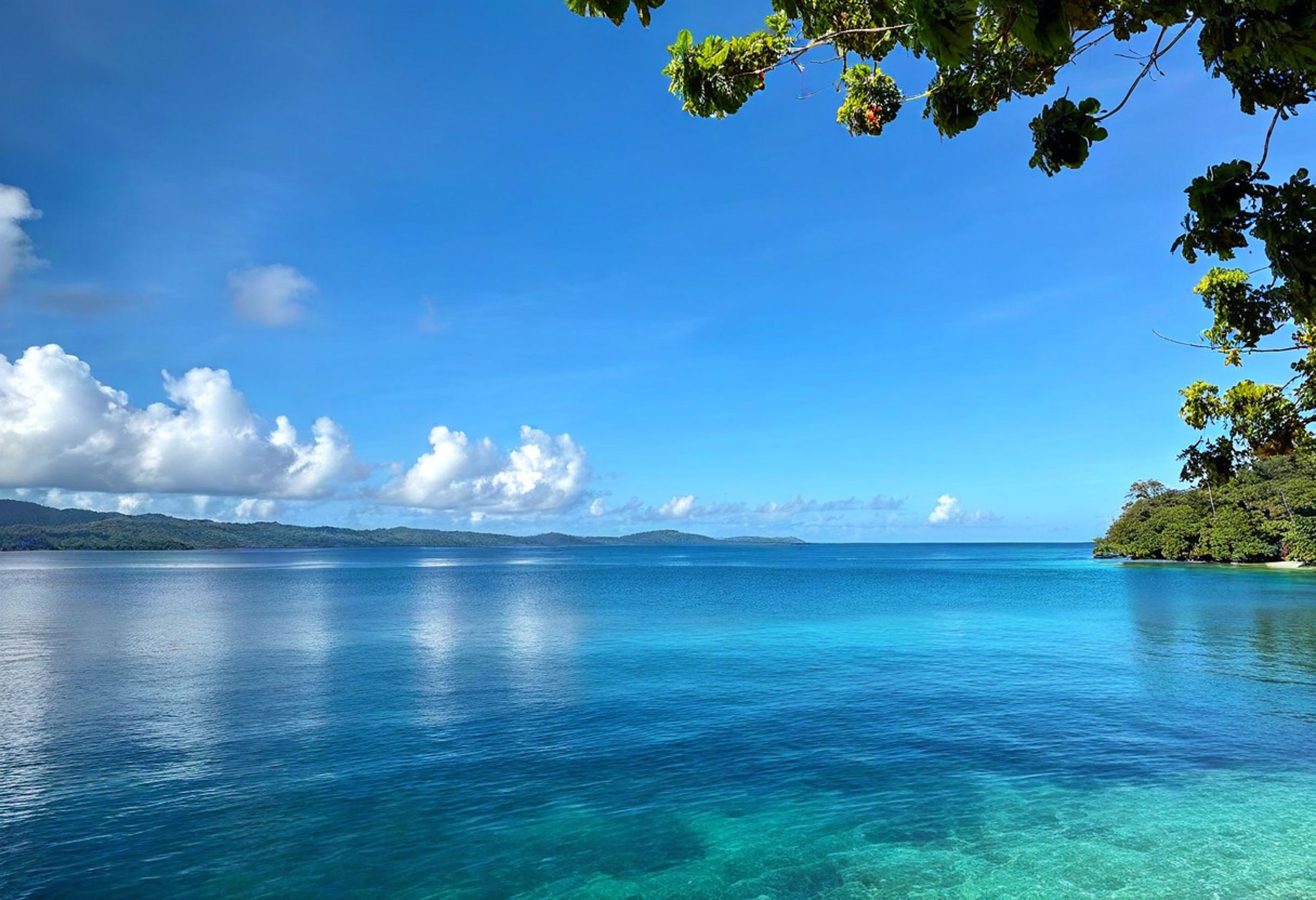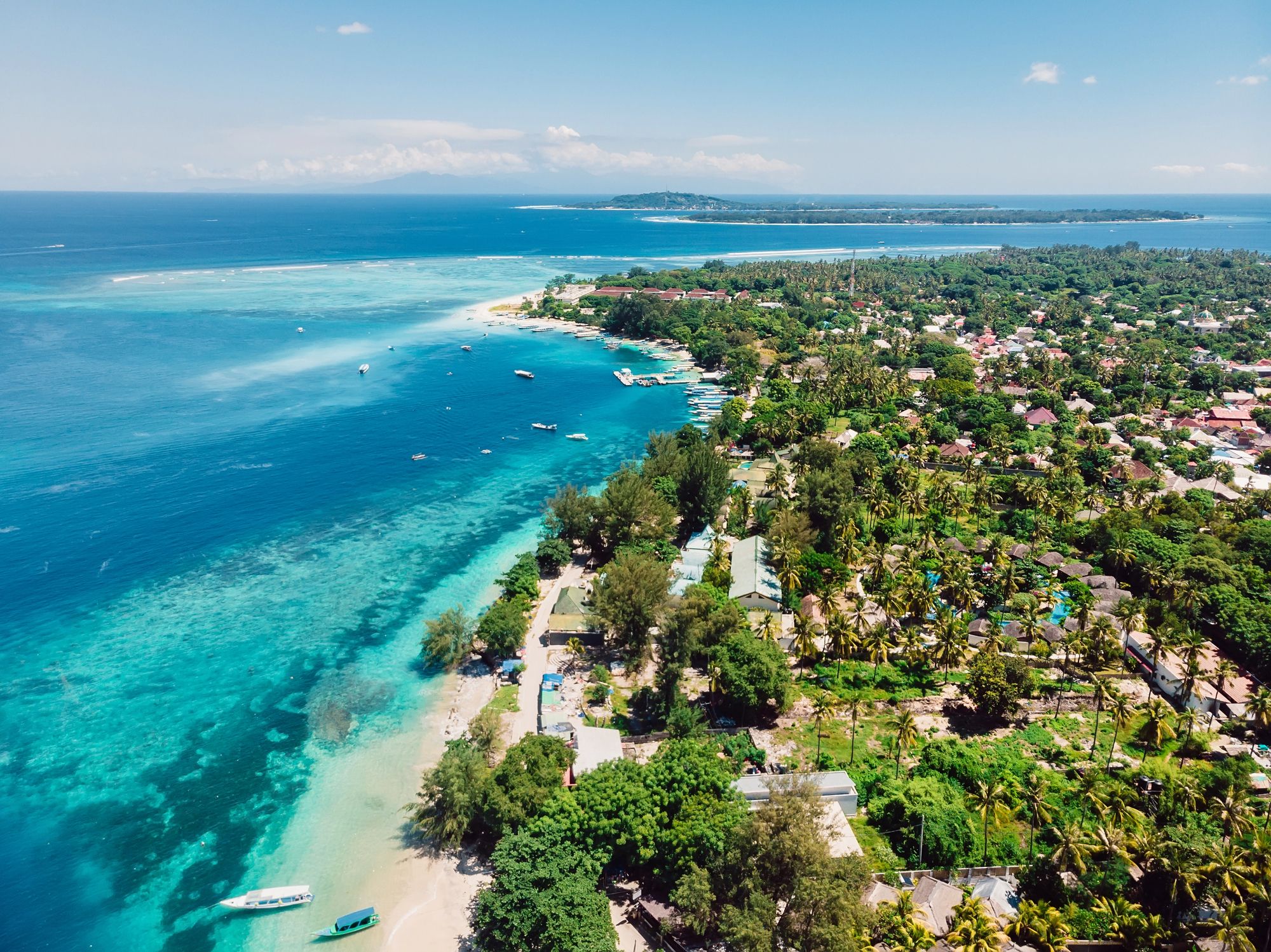Espiritu Santo, or just “Santo” as everyone calls it, is Vanuatu’s largest island out in the South Pacific. This place really mixes jaw-dropping natural beauty with a surprisingly rich history—honestly, not many destinations pull it off like Santo does. If you’re after adventure and relaxation, you’ll find both here: think powdery white beaches, those impossibly blue swimming holes, world-class diving, and thick, wild jungle.
Santo feels less built-up than Efate (Vanuatu’s main island), but that’s part of its charm. The island offers some of the best diving in the South Pacific, including the legendary SS President Coolidge wreck. And those blue holes? They’re so vibrant that photos just never do them justice.
From overwater bungalows to beachfront resorts, find your perfect stay in this island nation of more than 80 islands. Instant booking with best price guarantee!
Browse Accommodations Now
There’s more to Santo than just water activities. The island played a big role in World War II as a major Allied base, and you can still wander through reminders of that era. At the same time, you can relax at beachside accommodations. The slow pace and genuinely friendly locals make it a great spot if you want a real South Pacific island holiday without the crowds.
Getting to Espiritu Santo
Getting to Espiritu Santo isn’t tricky, but you’ve got a few options depending on where you’re starting. Most people fly in, though you can arrive by sea if you’re already in Vanuatu.
Flights and Airlines
Air Vanuatu runs most of the flights to Espiritu Santo’s Santo-Pekoa International Airport in Luganville. You’ll usually find several flights a week, connecting Santo with Port Vila and a few international spots.
Direct international flights are pretty limited, but if you’re coming from Australia, it’s not too tough. Schedules shift a bit with the seasons, so you’ll want to check Air Vanuatu’s latest timetable before locking in plans.
The flight from Port Vila to Santo takes about 50-60 minutes. These smaller planes give you some amazing views of the islands on the way.
Booking flights a few weeks ahead makes sense, especially if you’re traveling in peak season (June-September). Just a heads-up—domestic flights have stricter baggage limits than international ones.
Arrival From Port Vila, Sydney, and Brisbane
Brisbane offers the easiest direct international route to Santo, and the flight’s only about 2.5 hours—no need to stop in Port Vila.
If you’re coming from Sydney, you’ll have to connect through Port Vila. That first leg is around 3.5 hours, then you hop on a domestic flight to Santo.
Travelers from Port Vila can choose between air and sea. Air Vanuatu has daily flights between Port Vila and Santo.
There are also two passenger ferries—Vanuatu Ferry and Big Sista Ferry—linking Port Vila and Santo by sea. It’s a long trip (about 24 hours), so it’s best for those who don’t mind taking their time and enjoy being on the water.
Transportation Within the Island
Once you’re on Santo, getting around is pretty simple, though choices are limited. Taxis are available in Luganville, but they don’t use meters, so always agree on the fare before you set off.
Renting a car gives you the most freedom to explore. Several companies in Luganville rent 4WD vehicles, which you’ll want if you’re planning to hit the more remote beaches or villages. Remember, you’ll be driving on the right.
Public transport is mostly minibuses running set routes. They’re cheap but run on their own schedule and mainly serve locals.
For short trips in Luganville, just walk. It’s a good way to soak up the laid-back vibe. Many resorts also run shuttles to the main sights.
Where to Stay in Espiritu Santo
Espiritu Santo has plenty of places to stay, whether you’re after a bit of luxury or just want a simple bungalow by the beach. You’ll find options that really show off the island’s beauty and the locals’ warm hospitality.
Resorts and Hotels
The Espiritu Hotel brings modern comfort right into the heart of Luganville. It’s handy for sightseeing, with air-conditioned rooms and solid Wi-Fi—which isn’t always easy to find on the island.
Barrier Beach Resort features beachfront villas with direct ocean access. Their restaurant serves up fresh seafood that local fishermen bring in each day.
If you want something more exclusive, Ratua Private Island Resort is hard to beat. It sits on a tiny island just off Santo and offers villas built from Indonesian antique wood. They’re big on sustainability, using solar power and growing their own food.
Turtle Bay Lodge is popular with divers and adventure-seekers. The staff can sort out Blue Hole tours and other activities for you.
Beachfront Bungalows
Santo Seaside Villas has self-contained units right on the water, complete with kitchenettes for DIY meals.
Village-style bungalows give you a more authentic stay. Most are family-run and cost between $30-70 USD per night. They’re simple, with mosquito nets and shared bathrooms.
Lonnoc Beach Bungalows are right by the famous Champagne Beach. These traditional bungalows have thatched roofs and ocean views. The hosts often cook up local meals if you ask.
Port Olry Bungalows, up in the northeast, put you close to untouched beaches and great snorkeling. Staying in the village gives you a glimpse into local life, but you’ll still be comfortable.
Unique Island Accommodations
Hidden Cove Eco Retreat offers luxury tents for couples who want to blend comfort with a bit of wild. These “glamping” tents are right on the water, with real beds and private bathrooms, but you’re still close to nature.
Aore Island Resort is just a quick boat ride from Luganville and features overwater bungalows. The resort grows a lot of its own produce and gets seafood from local fishermen. Their restaurant is known for coconut crabs (when they’re in season) and other local treats.
If you’re on a budget, consider homestays in Santo’s villages. Local families welcome you into their homes and share traditional customs. Meals are usually included, and you can arrange these stays through the Vanuatu Tourism Office.
A few eco-lodges run completely off-grid, using solar power and collecting rainwater. These places let you unplug and support sustainable tourism at the same time.
Top Attractions in Espiritu Santo
Espiritu Santo has a mix of natural wonders and historical sites that make it pretty special. The island’s beauty and its World War II past are both worth exploring.
Champagne Beach
Champagne Beach is easily one of Vanuatu’s most photographed beaches. The white sand curves along turquoise water, and honestly, it looks like something out of a travel brochure.
The beach gets its name from the tiny gas bubbles that fizz up through the sand at low tide—like champagne, thanks to volcanic activity under the shore.
The drive from Luganville takes about an hour. Visitors pay a small fee to the local village for upkeep. If you want to avoid the cruise ship crowds, go early in the morning.
Facilities are pretty minimal—there’s not much shade and no food stalls, so pack what you need. The water is calm and shallow, great for families and snorkeling near the coral at the edges.
Blue Holes
Espiritu Santo is known for its blue holes—deep, freshwater pools that are almost unreal in color, surrounded by rainforest.
Matevulu Blue Hole (sometimes spelled Matavulu) is a favorite. You’ll find wooden platforms for jumping and rope swings hanging from big banyan trees. The water stays cool all year, which is a blessing in the heat.
Nanda Blue Hole is another stunner, with water so clear and blue it feels otherworldly. The owners have built stairs and simple facilities for visitors.
Jackie’s Blue Hole is a bit more rustic but just as lovely. Most blue holes charge a small entrance fee (about 500-1000 vatu) that goes back to the local community.
You’ll need a ride to get to these spots—the roads are a bit rough, but passing through villages and coconut plantations is half the fun.
Million Dollar Point
Million Dollar Point is like an underwater museum, full of American military gear dumped at the end of World War II.
After the war, the Americans tried to sell their surplus equipment to the British and French colonial authorities. When talks fell through, they just drove jeeps, trucks, and bulldozers straight into the sea rather than ship them home.
Now, you can snorkel or dive around this artificial reef made from vehicles and machinery. At low tide, you’ll even spot rusted metal poking out of the water.
It’s only about a 10-minute drive from Luganville. Bring your own snorkel gear or rent some in town. There’s a small entry fee, and local guides can point out some of the more interesting wrecks.
You can enter the water right from the shore, but currents get strong, so weaker swimmers should stay close to the beach.
Millennium Cave
The Millennium Cave tour is probably Santo’s most adventurous day trip. It’s not exactly easy, but if you’re up for it, the experience is unforgettable.
You’ll start with a 90-minute hike through jungle and villages, then scramble down bamboo ladders to reach the huge cave. Inside, you’ll need a headlamp to see, and you’ll wade through water and pass by bats.
After you come out of the cave, you’ll clamber over boulders and swim through a canyon with towering rock walls on both sides.
Elegant resorts, tropical villas, and vacation rentals with immediate confirmation. Experience a culture dating back to 1,300 BC in this breathtaking archipelago!
See Available Properties
This tour requires a decent level of fitness and you need to be comfortable in the water. Guides from Vunaspef Village lead every group, and your fee helps fund community projects.
Book ahead, especially in peak season. Wear clothes and shoes that can get soaked and bring a waterproof bag for your camera.
Experience Vanuatu’s Natural Beauty
Espiritu Santo really puts Vanuatu’s natural beauty on display. From untouched beaches to lively reefs, there are endless ways to get out and enjoy nature here.
White Sand Beaches
Champagne Beach is the star, with its powdery white sand and clear water—perfect for swimming. The beach got its name from those tiny bubbles at low tide, just like champagne.
Port Olry Beach runs for over 2 kilometers, lined with coconut palms and calm water. Local beachside shacks serve up fresh seafood.
Lonnoc Beach is quieter, with fewer people around. Its gentle slope makes it great for families and little kids.
At low tide on most beaches, you can wander far out into the ocean and still only be knee-deep. It’s ideal for beginner swimmers and children.
Coral Reefs and Lagoons
Santo’s Blue Holes are limestone pools with water so clear it’s almost hard to believe. You can drive to Matevulu Blue Hole, while Nanda Blue Hole needs a short canoe ride.
Million Dollar Point is a top spot for snorkeling among old WWII gear. Fish have made homes in the sunken vehicles.
Divers flock to the SS President Coolidge, a massive shipwreck that’s now one of the world’s most accessible wreck dives. Even beginners can check out the upper sections.
Coral Gardens near Bokissa Island show off colorful reefs full of clownfish, angelfish, and loads of other tropical fish. The lagoons have great visibility almost all year.
Tropical Wildlife
Santo’s rainforests are home to plenty of birds, like the Vanuatu kingfisher with its bright blue feathers. Early mornings are best for birdwatching.
Fruit bats—or flying foxes—hang from trees during the day and fill the skies at dusk.
You’ll often spot green and hawksbill turtles while snorkeling on the reefs.
Coconut crabs, the biggest land-dwelling arthropods around, wander the forests. They can grow over a meter across and even climb palm trees.
If you’re lucky, you might spot dugongs (sea cows) in the seagrass beds around the island. They’re pretty rare, but sometimes they show up in the quieter bays.
Diving and Water Adventure
Espiritu Santo is a diver’s dream, with clear water and loads of marine life. Underwater, you’ll find everything from WWII wrecks to colorful reefs teeming with tropical fish.
SS President Coolidge
The SS President Coolidge is Santo’s top draw for divers. This 200-meter luxury liner-turned-troop ship sank in 1942 after hitting friendly mines, and now it’s one of the world’s largest accessible shipwrecks.
The wreck sits close to shore, between 20 and 70 meters deep. Divers can check out multiple decks, peek into cargo holds, and see “The Lady”—a porcelain figure with a lamp that’s become a must-see photo spot.
Local dive operators run special trips to the Coolidge. You’ll need a few dives to see it all. Beginners can explore the shallower areas, while experienced divers can head deeper to find jeeps, military gear, and even old medical supplies.
Diving for Beginners and Experts
Santo really caters to all kinds of divers. If you’re new to diving, you’ll love the calm waters and, on a good day, visibility that can hit 30 meters or more. Several dive shops run PADI courses for those just starting out.
Experienced divers won’t feel left out—Santo brings both shallow reef dives and some wild deep dives into the mix. Beyond the Coolidge, you’ll find places like Million Dollar Point, where dumped American military equipment has turned into a strangely beautiful artificial reef.
Local operators such as Allan Power Diving and Pacific Dive rent out gear, guide trips, and organize boat rides to top dive sites. Most shops schedule two or three dives each day. Expect to pay between $85 and $150 USD per dive, depending on where you go and what equipment you need.
Snorkeling and Marine Life
You don’t need scuba certification to get a taste of Santo’s underwater world. Many reefs are shallow enough for snorkeling and still packed with life.
Aore Island is a favorite for shore snorkeling—you’ll spot colorful coral gardens and maybe hundreds of tropical fish. The famous blue holes—natural freshwater springs—offer a totally unique snorkeling experience in water so clear it almost doesn’t look real.
You might see butterflyfish, angelfish, clownfish, and sometimes a reef shark or turtle if you’re lucky. Top snorkeling spots include:
- Champagne Beach reef edges
- Lonnoc Bay coral gardens
- Port Olry’s protected coves
Most resorts lend out snorkeling gear to guests, but if you’re hoping to capture the colors and fish, don’t forget an underwater camera.
Cultural Experiences and Local Life
Espiritu Santo gives travelers real chances to connect with Ni-Vanuatu culture through village visits, traditional practices, and performances you won’t see anywhere else in Melanesia.
Leweton Cultural Village
Leweton Cultural Village, just outside Luganville, showcases traditional Melanesian customs. The community comes from the Banks Islands in northern Vanuatu.
They welcome visitors with hands-on demonstrations of daily crafts and activities. You’ll see women weaving mats and baskets from pandanus leaves, while men show off traditional hunting techniques and tool-making skills.
Entry fees go straight to the community. Most tours last two to three hours, and having a guide really helps you understand what’s going on.
Santo Heritage Tours and Wrecks to Rainforest can organize visits to Leweton. It’s smart to book at least a day ahead through Santo Travel in Luganville.
Kava and Traditional Food
Kava drinking sits at the heart of Vanuatu’s social life. Locals make this traditional drink from the kava root, and it has a mild sedative kick.
Where to try kava:
- Local nakamals (kava bars) in Luganville
- Village visits with tour groups
- Some resorts run kava ceremonies
Melanesian food leans heavily on root vegetables—think taro, yam, and manioc. Locals cook these in earth ovens called “laplap.”
Village visits often let you help with food prep. You’ll watch locals wrap food in banana leaves and bake it on hot stones. The result? A smoky, tender dish that’s pretty unique.
Many tours include meals, so you’ll get to taste things like coconut crab, tuluk (meat wrapped in taro leaves), and fresh tropical fruit.
Water Music and Fire Making
Water Music performances are one of Santo’s cultural highlights. At the Leweton Cultural Experience, women stand in the water and create rhythms by slapping, cupping, and moving their hands. It’s surprisingly melodic, and each pattern tells a story—sometimes about daily life, sometimes legends.
Performances usually run for about 20-30 minutes.
Traditional fire making is another crowd-pleaser. Locals show how they start flames without matches or lighters, using only dried wood and a bit of friction—fire appears in minutes if you’re watching a pro.
You’ll often see custom dances alongside these demonstrations, telling stories from Santo’s past. Most cultural tours include these experiences, and the best ones are run by Santo Heritage Tours and Kokonat Wokbaot.
Sometimes, the Blue Hole areas host special events that combine swimming with cultural performances.
Adventure Activities
Espiritu Santo isn’t just about beaches and chilling out—it’s packed with adventures for travelers who want a bit more action. The island’s mix of landscapes means you can get close to nature and local culture in all sorts of ways.
Canoe Tours and Bamboo Bridge
Near Luganville, you’ll find a bamboo bridge that’s a cool example of traditional Ni-Vanuatu engineering. This swinging bridge stretches across a crystal-clear river and makes for a fun, slightly wobbly crossing. Local guides explain how they built it as you make your way over.
Canoe tours offer a quieter way to see Santo’s rivers and jungle. You can paddle through lush waterways, watching wildlife and soaking up the scenery. Most tours last two to three hours and include stops at scenic spots.
Many operators bundle the bamboo bridge and canoeing into one package. Expect to pay 3000-5000 VT ($25-45 USD) per person. Bring water-resistant shoes and sun protection—trust me, you’ll want both.
Exploring Hidden Caves
Millennium Cave is the big one for cave adventures in Santo. This full-day tour is tough but rewarding, with jungle trekking, cave exploring, and canyon swimming. You’ll need to be moderately fit to handle bamboo ladders and slippery rocks.
Guides lead you through huge limestone caves where thousands of bats hang overhead. The lighting inside is dramatic and makes the place feel almost otherworldly.
Easy booking across stunning accommodations from luxury resorts to eco-friendly retreats. This Y-shaped archipelago offers pristine beaches, active volcanoes, and world-class diving!
Secure Your South Pacific Getaway
There are smaller caves scattered around Santo, too. Bat Cave on Aore Island is less intense but still fascinating—you can watch flying foxes in their natural habitat and learn a bit about their role in the ecosystem.
Prices usually fall between 6000-9000 VT ($50-80 USD), depending on the cave and whether transport’s included. Most tours provide helmets and torches.
Trekking and Nature Walks
Mount Hope Waterfall offers a hike that’s doable for most people. After about 40 minutes walking through tropical forest, you’ll reach a beautiful multi-tiered waterfall and can swim in the pools.
If you’re up for a challenge, guided treks into Santo’s interior mountains show off different ecosystems and epic views. You’ll probably meet local villagers and see some traditional customs along the way.
Santo Horse Adventures lets you explore by horseback, riding along the coast, through jungle, and across shallow rivers. You don’t need any riding experience for the basic tours.
Most treks include transport, guides, and sometimes a meal. Prices start around 4000 VT ($35 USD) for a half-day. Wear sturdy shoes and bring insect repellent for a more comfortable adventure.
Exploring Luganville and Surrounding Villages
Luganville acts as the jumping-off point for Espiritu Santo’s cultural and coastal gems. The area blends the island’s second-largest town with pretty fishing villages and easy trips to nearby islands.
Luganville Town
Luganville is Vanuatu’s second city, but it feels way more laid-back than Port Vila. The main street runs along the waterfront, lined with shops and cafes, and you can watch fishing boats drifting in and out.
If you’re up early, check out the market. It’s packed with fresh produce, crafts, and friendly faces. Most vendors speak some English, but tossing in a few Bislama phrases will get you extra smiles.
World War II history pops up all over Luganville. The town was a major American base, and you can still spot old Quonset huts and military relics. The Unity Park Museum displays artifacts and photos from that era.
Port Olry and Coastal Fishing Villages
Port Olry, about 40 minutes north of Luganville, is one of the prettiest coastal spots in Vanuatu. This fishing village, with a French twist, has white sand beaches and clear turquoise water perfect for a swim.
You can go fishing with local guides who know where to catch mahi-mahi and tuna. Beachside restaurants serve up the day’s catch with classic island flavors.
Between Port Olry and Luganville, you’ll pass smaller villages that welcome visitors. Hog Harbour gives you a peek at everyday island life—traditional outrigger canoes, friendly locals, and cultural demonstrations where you can learn old-school fishing techniques.
Aore Island Day Trips
Aore Island sits just a quick 10-minute boat ride from Luganville harbor. Water taxis cross all day for around 500 vatu (about $4 USD).
The snorkeling here is fantastic—fringing reefs full of colorful coral and tropical fish. Visibility often goes beyond 30 meters, so it’s a favorite with underwater photographers.
Several resorts on Aore welcome day guests. You can grab lunch at an oceanfront restaurant, rent a kayak, or just relax on the beach. The coconut plantations make for nice shady walks.
If you love chocolate, don’t skip the island’s famous organic chocolate made from local cacao. Some plantations offer tours where you can see how they make chocolate from bean to bar.
World War II Heritage
Espiritu Santo played a big role in the Pacific during World War II. The island was a major Allied military base, and you can still find historic sites that bring that era to life.
Military Base Remains
During WWII, the US military set up a massive base on Espiritu Santo. At Million Dollar Point, Americans dumped tons of military equipment into the sea rather than leave it behind. Now, it’s an underwater museum full of jeeps, bulldozers, and machinery—ideal for snorkeling or diving.
Old bomber strips still dot the island, where planes once took off for battles across the Pacific. Paradise Tours runs guided WWII tours to these sites, sharing stories about how the island became so strategically important.
Quonset Huts and Relics
You’ll spot preserved Quonset huts around the island—those curved metal buildings that once housed troops, hospitals, and gear. Some still stand, quiet reminders of the thousands who lived here during the war.
The most famous relic is the SS President Coolidge, a luxury liner turned troop ship that sank after hitting friendly mines near the shore. Today, it’s one of the world’s top large shipwreck dives.
Santo Heritage Tours specializes in showing visitors these WWII treasures. Their guides share stories about how the massive military presence changed the island’s culture and landscape forever.
Local Cuisine and Dining
Espiritu Santo serves up a food scene that blends traditional Melanesian flavors with the island’s fresh ingredients. The local cuisine really reflects both the land and the culture.
Melanesian Meals
Santo’s traditional meals revolve around root crops like taro, yam, and manioc. These staples show up at almost every meal. The most famous dish is lap lap—a pudding of grated root veg, coconut cream, and meat, all wrapped in banana leaves and cooked slowly in an earth oven.
You’ll probably come across simboro too—grated cassava or taro stuffed with meat and veggies. Many Luganville restaurants serve these dishes with a modern twist.
The cooking process is part of the fun. Locals use hot stones to cook food underground, giving everything a smoky flavor you won’t find anywhere else.
Seafood Delicacies
Fresh seafood steals the show on Santo’s menus. The Tu Restaurant & Bar and Chez Louis in Luganville are known for great seafood, from grilled fish to coconut crab.
Port Olry’s beachside restaurants are famous for their fresh catches—enjoy reef fish, lobster, or giant prawns, usually prepared simply with lime, coconut, and herbs.
Coconut crab is a rare treat. Locals harvest them carefully since they’re protected. These huge crabs eat coconuts and have a sweet, distinct flavor unlike any other crab. If you see it on the menu, it’s worth a try.
Village Markets
The Santo markets are probably the best way to dive into local food culture. Every day, Luganville’s main market buzzes with life—huge piles of tropical fruit, fresh veggies, and fish that someone pulled from the ocean that very morning.
You’ll spot seasonal treats like mangoes, papayas, and pineapples, plus some more unusual finds: nakavika (rose apple) and naus (sea almonds). Hanging out at the market, you get to chat with ni-Vanuatu vendors and maybe nibble on coconut bread still warm from the oven.
If you’re after something truly local, check out the kava bars tucked near the markets. They serve up kava, a traditional drink made from the root of the same name, and it’s a big deal in Vanuatu culture. Oh, and about those prices—feel free to bargain a little, but keep it friendly and respectful.
Practical Travel Information
Planning a trip to Espiritu Santo? It’s worth thinking about when you’ll go, what you’ll pack, and how to travel responsibly in this beautiful corner of Vanuatu. Here are a few tips to help you get sorted before you set off.
Best Time to Visit
From May to October, the dry season brings the best weather to Espiritu Santo. You’ll get less rain, lower humidity, and pleasant temperatures hovering around 25-28°C (77-82°F).
The water stays super clear during these months—perfect for snorkeling or diving around the famous wrecks and reefs. The SS President Coolidge dive site really shines, with visibility often stretching past 30 meters.
Brisbane flights land in about 2.5 hours, and you can usually find direct connections all year. If you’re traveling in peak season (June-August), it’s smart to book your room a few months ahead.
The wet season (November to April) means more rain and sometimes cyclones, but you’ll run into fewer tourists and snag better deals. Just know that heavy rain can rule out some activities.
Packing Tips and Essentials
Espiritu Santo’s climate calls for light, breathable clothes. Here’s what you shouldn’t forget:
Must-haves:
- Reef-safe sunscreen (protects those reefs!)
- Insect repellent (especially handy at dusk)
- Lightweight rain jacket (showers pop up even in dry months)
- Decent walking shoes for jungle trails
- Water shoes for blue holes and beaches
For activities:
- Snorkeling gear (rentals exist, but your own fits better)
- Waterproof bag or case for your gadgets
- Flashlight or headlamp for cave exploring
- Small first aid kit for the basics
The local currency is Vatu. While bigger resorts take cards, most small places only deal in cash. ATMs are pretty much just in Luganville, so grab enough cash before heading out.
Responsible and Sustainable Tourism
If you want to help keep Vanuatu’s environment and culture thriving, a little respect goes a long way. “Kastom” (traditional culture) shapes everyday life in Espiritu Santo.
Always ask before snapping photos of locals or stepping into villages. When you visit traditional communities, women should cover shoulders and knees—locals really appreciate the gesture.
Support the community by:
- Hiring local guides for blue hole or jungle adventures
- Buying handicrafts straight from village artisans
- Picking locally-owned places to stay if you can
Vanuatu’s marine life needs protection. Don’t touch coral while snorkeling or diving, and leave single-use plastics at home—they too often end up in the sea.
Most blue holes sit on private land, so those small entrance fees go right to the families who look after these natural gems.
Island Hopping Beyond Espiritu Santo
Espiritu Santo is amazing, but Vanuatu has over 80 islands to tempt you. The nearby islands add fresh culture, wild landscapes, and new adventures to your trip.
Malekula and Tanna
Malekula, the country’s second-largest island, feels like a step back in time. Authentic cultural experiences are everywhere—you can watch traditional ceremonies and visit villages where ancient customs still matter. The Small Nambas and Big Nambas tribes welcome respectful visitors who are curious about their traditions.
Tanna Island lures travelers with its active volcano, Mount Yasur. Standing on the crater’s edge as it erupts? It’s wild, and with a certified guide, it’s safe too. Tanna also has:
- Black sand beaches
- Cargo cult villages (think John Frum movement)
- Custom villages where old ways live on
- Blue caves you can only reach by swimming
Flights connect these islands with Santo, usually stopping in Efate. Plan to spend at least 2-3 days on either island to really soak it in.
Visits to Efate
Efate, home to Port Vila and the main international airport, is probably where you’ll first land in Vanuatu. The island mixes modern tourism with natural beauty.
Port Vila brings:
- Lively markets with fresh food and crafts
- A surprising range of international eats after simple island meals
- Good-quality resorts and hotels
- Easy-access snorkeling and diving
Step outside the capital, and you’ll find Mele Waterfalls, blue holes, and cultural villages where you can see traditions in action. Efate’s round-island road makes exploring simple; you can drive the whole thing in about three hours.
A lot of travelers hang out on Efate for a few days before heading north to Santo. It’s a good way to settle into “island time” and pick up any supplies you might miss on the outer islands.
Coconut Plantations and Agriculture
Coconut plantations really shape Espiritu Santo’s landscape—they’re everywhere and play a huge role in both the island’s economy and daily life. If you drive along the coast, you’ll spot endless rows of tall palms, their leaves waving in the breeze and stretching as far as you can see.
Back in the early 20th century, European settlers set up the first big coconut farms here. These days, local ni-Vanuatu families usually run and own them, which feels like a nice shift.
Islanders get a lot out of coconuts:
- They use the meat and milk in cooking.
- The oil goes into food and beauty products.
- People turn the husks into rope and all sorts of crafts.
- Shells? Those become bowls or decorations.
But it’s not just about coconuts. The soil here—thanks to the island’s volcanic past—makes a great home for all kinds of crops. As you drive around, you’ll notice plots of island cabbage, juicy pineapples, and mango trees mixed in with the palms.
If you’re lucky, you’ll catch a glimpse of coconut crabs during a plantation visit. These oddball creatures start out as land crabs, but eventually, they climb up coconut trees and make themselves at home. Locals consider them a delicacy, though honestly, they’re fascinating to watch even if you’re not planning to eat one.
Find available hotels and vacation homes instantly. No fees, best rates guaranteed!
Check Availability Now
Local guides offer agricultural tours, and they’re worth checking out. You’ll get to taste fresh produce and hear about traditional farming methods. Most guides love sharing how their communities have kept these sustainable practices alive for generations.
Farmers here find ways to blend old wisdom with newer techniques. They stick to traditions passed down through families, but they’re not afraid to adapt when markets or the climate start shifting. It’s a balancing act, but it seems to work for them.

